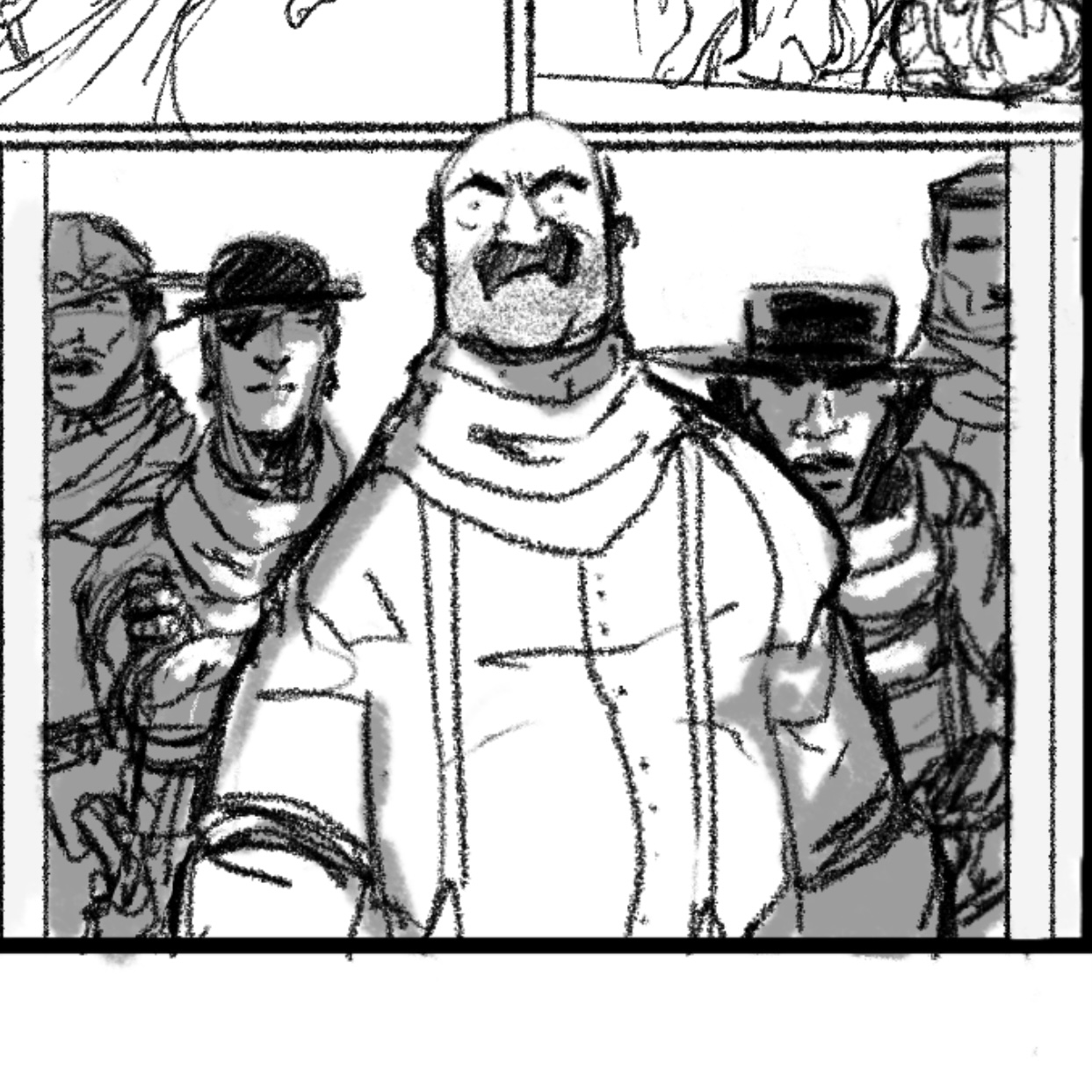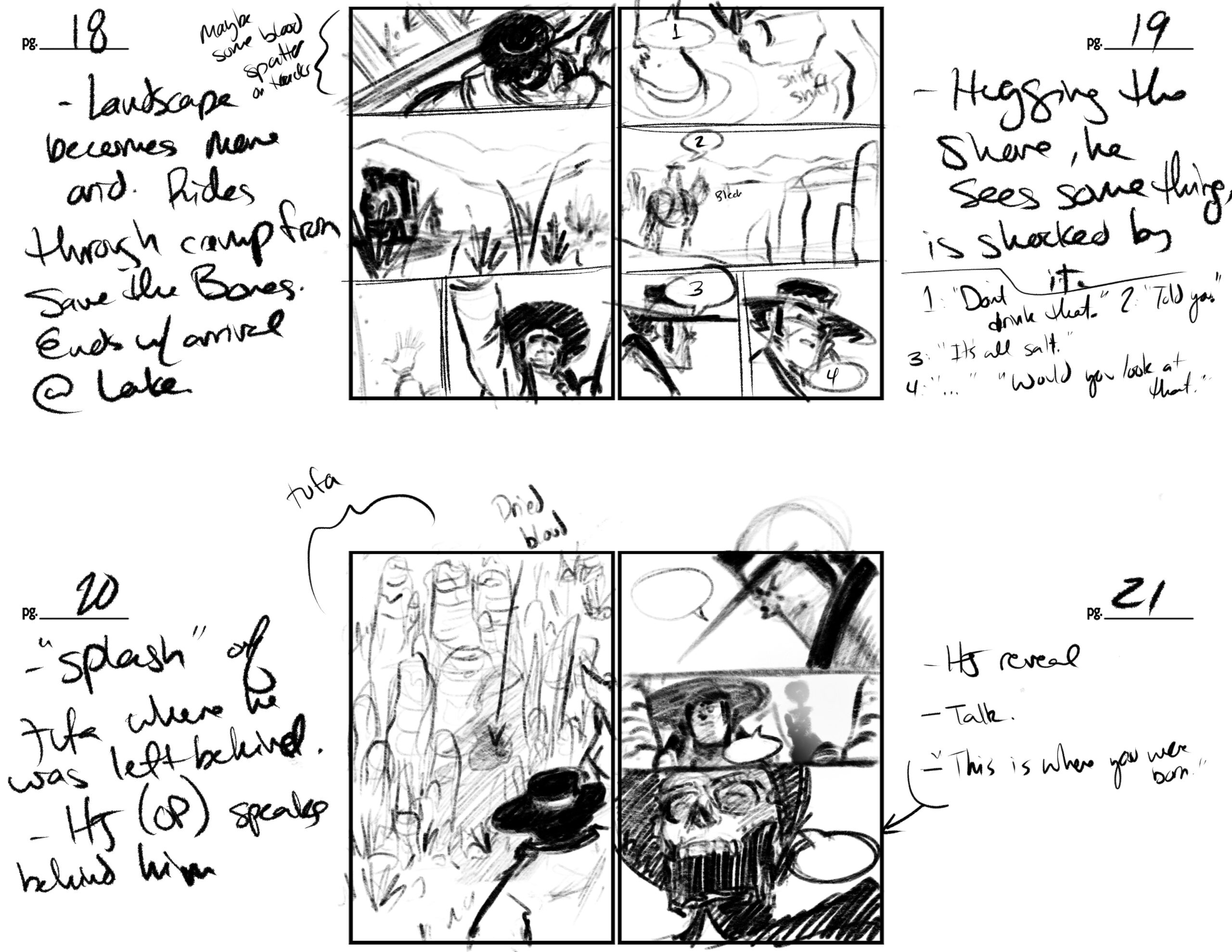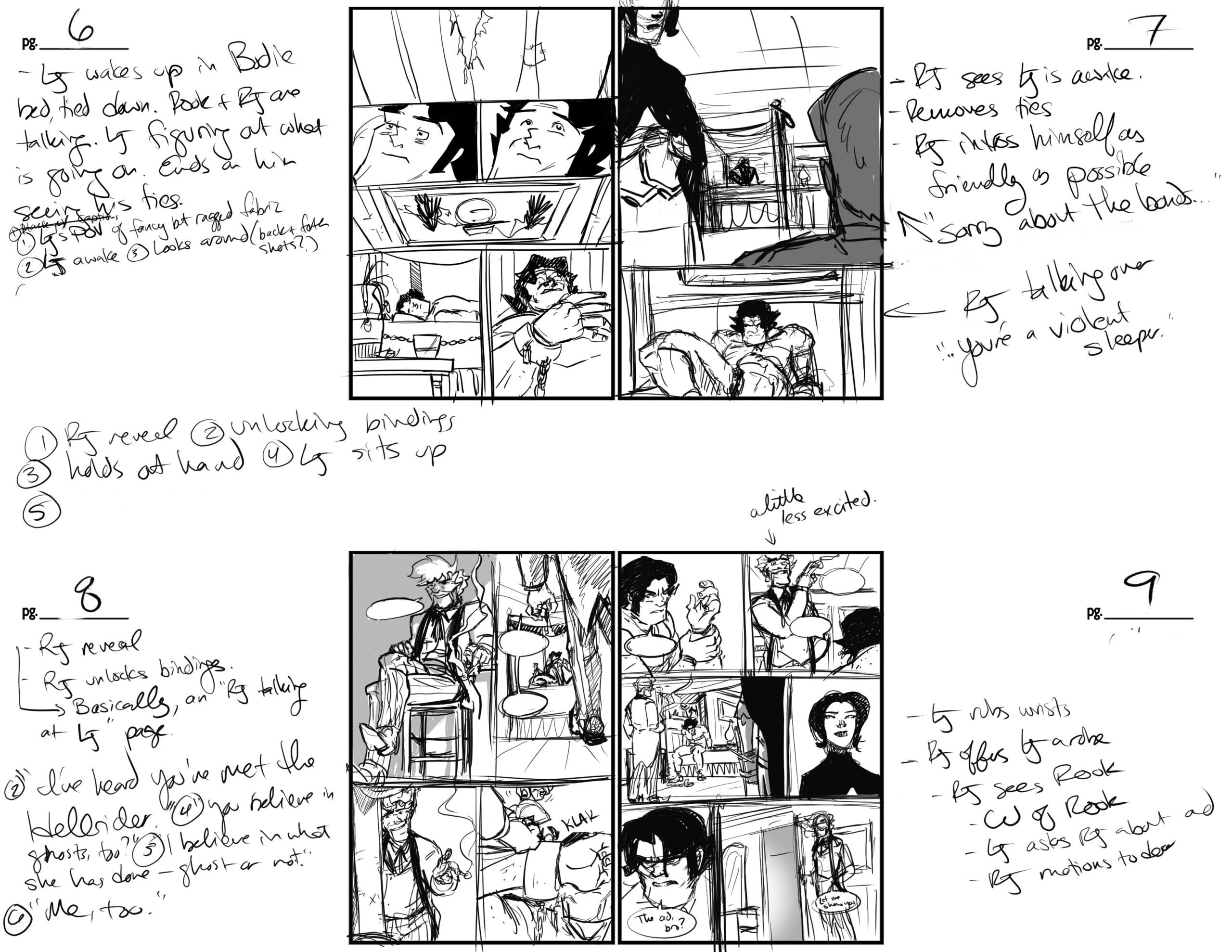Sketch Fridays #93 – Chapter 6 Thumbnail

Production is moving forward on the sixth and final chapter of Long John. While I feel I’m already behind on my own, perhaps arbitrary, schedule at this point, I’m deep in the thumbnailing stage as we speak.
There has been a bit of discourse lately––specifically on the great comic-creating podcast, Comic Lab––about thumbnails; specifically the observation that, apparently, many people don’t do them at all. What that means is that instead of working out page and panel layouts as small rough drawings to use as a guide for the actual drawing of their pages, many artists just work everything out on the page as they go.
It’s a complicated conversation because there’s no wrong way to make comics (unless, of course, you steal them or hurt someone)––as long as they get done and are the best you can do then it’s all good. Also, I don’t want to go so far as to be prescriptive about process––find the process that actually gets comics made for you, whatever that may be. Just get them done). Prescribing a process would not only be hypocritical of me as a comicker but also as a composition professor. However, especially for narrative comics like comic books and graphic novels (as opposed to classic newspaper style comic strips), thumbnails can be a crucial step to actually get things done, which is the number one issue many people who want to make comics face. In my eyes, thumbnails are as (or more) important than scripting simply due to the visual nature of the medium, and I rely on them heavily.

Process in academic composition (and just writing in general) has been heavily researched and forms the basis of my pedagogy and my own comicking process. No matter what your process is––and no matter how many steps it takes––it all tends to sort out into four basic (and recursive) stages: prewriting, drafting, revising, editing. To that end, I see thumbnails as distinct from penciling. The act of pencils is where you’re actually laying down guiding lines on what will ultimately become the final page itself. It’s the equivalent of what we call the “drafting” stage of the academic writing process. Drafting is when you’re actively creating what will be the final product.
I view thumbnailing as part of the “prewriting” stage of the process. In prewriting you’re doing everything that gets you ready to start drafting (what composition teacher and theorist, Donald Murray, calls a “signal” to start writing), which includes research, jotting down ideas, and, in the case of making comics, scripting and thumbnailing. This stage isn’t about the final product itself, it’s about getting you to the point where you can honestly say, “I’m ready to make the thing.”

I thumbnail every page of each book and when I’m done, I print them out and hang them above my board and use them as a guide for the actual penciling and inking of the pages. “Guide” is an important word here because what ends up on the page can be different from what was thumbnailed, but the point of thumbnails is working out the general ideas be they detailed or really sketchy (I’ve done both). For example, the panel posted for this post is a bit more detailed than other thumbnails I’ve done because I also used it as an opportunity to work on character design. Other times, I’ve used the thumbnail as an opportunity to work out the perspective of a shot so that I had the memory and practice of that when I later sat down to draw the actual page. Most of the time, though, they are very loose and sketchy because I know how to draw Long John, I just need ot know what he’s doing in the panel and where to put him. The point is that you should look at a thumbnail and not say “THAT is the page” or “I’m going to do EXACTLY that”––instead, you look at a completed thumbnail and, with hope, have the confidence to say, “Okay, I can do that” and use it as a launching point for working.
A process is only about getting you to the point where you can get something done. It’s not strict and it’s not a rule––it’s about being kind to yourself and building toward something that you can show the world and be proud of instead of taking a running leap off the edge and hoping you land on the other side. While you can sometimes––even often––reach the other side that way, it’s never a guarantee. That’s where preparation can come in handy and be there as a tool for when you need it.

The final chapter of Long John, huh?
Wondering if Long John will finally get his clothes back?!
Check out the end of Chapter 5 for that answer!